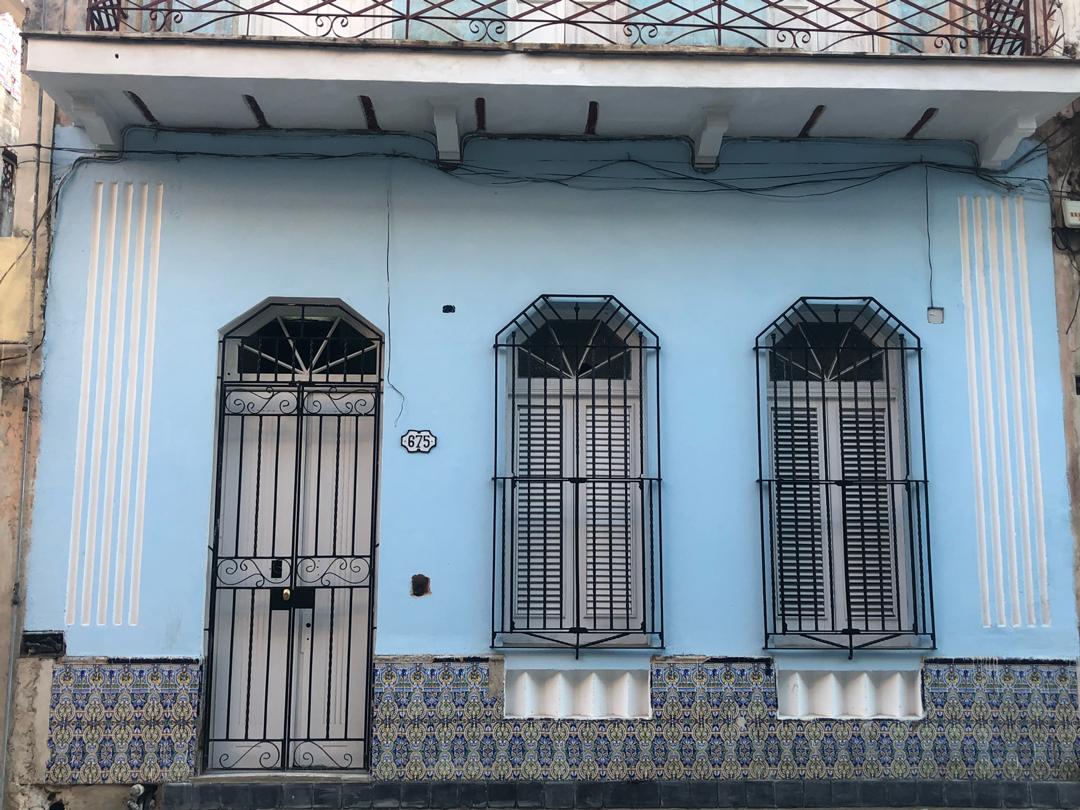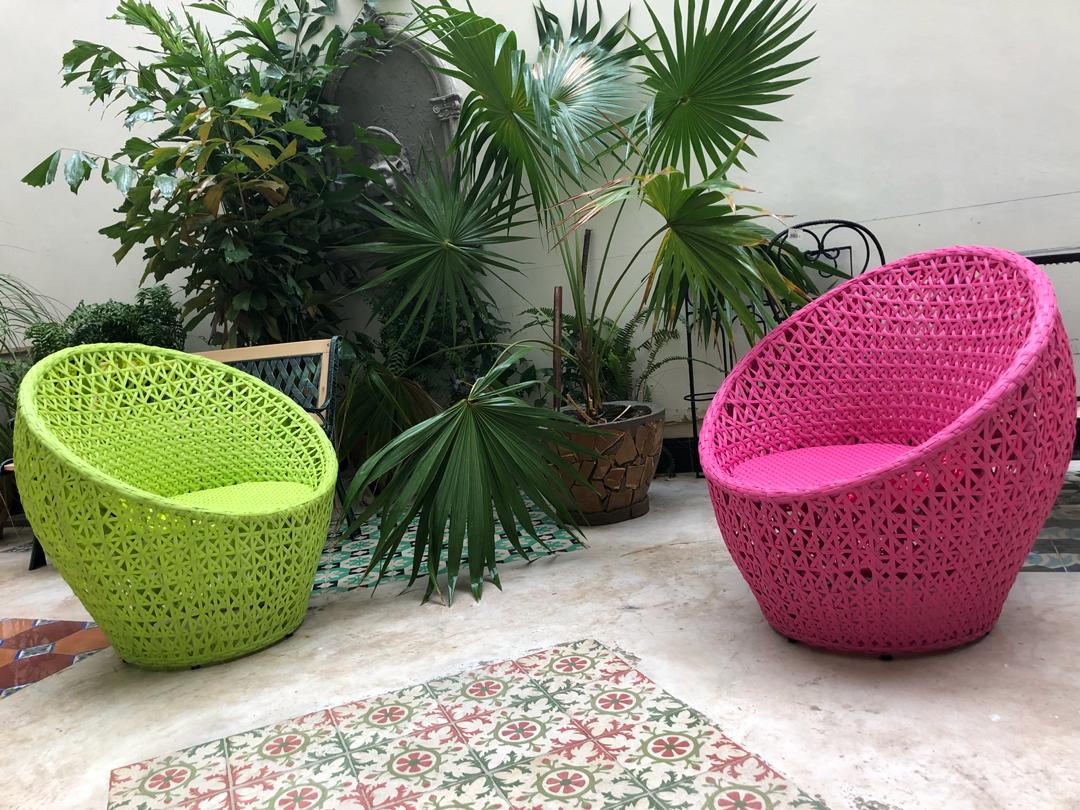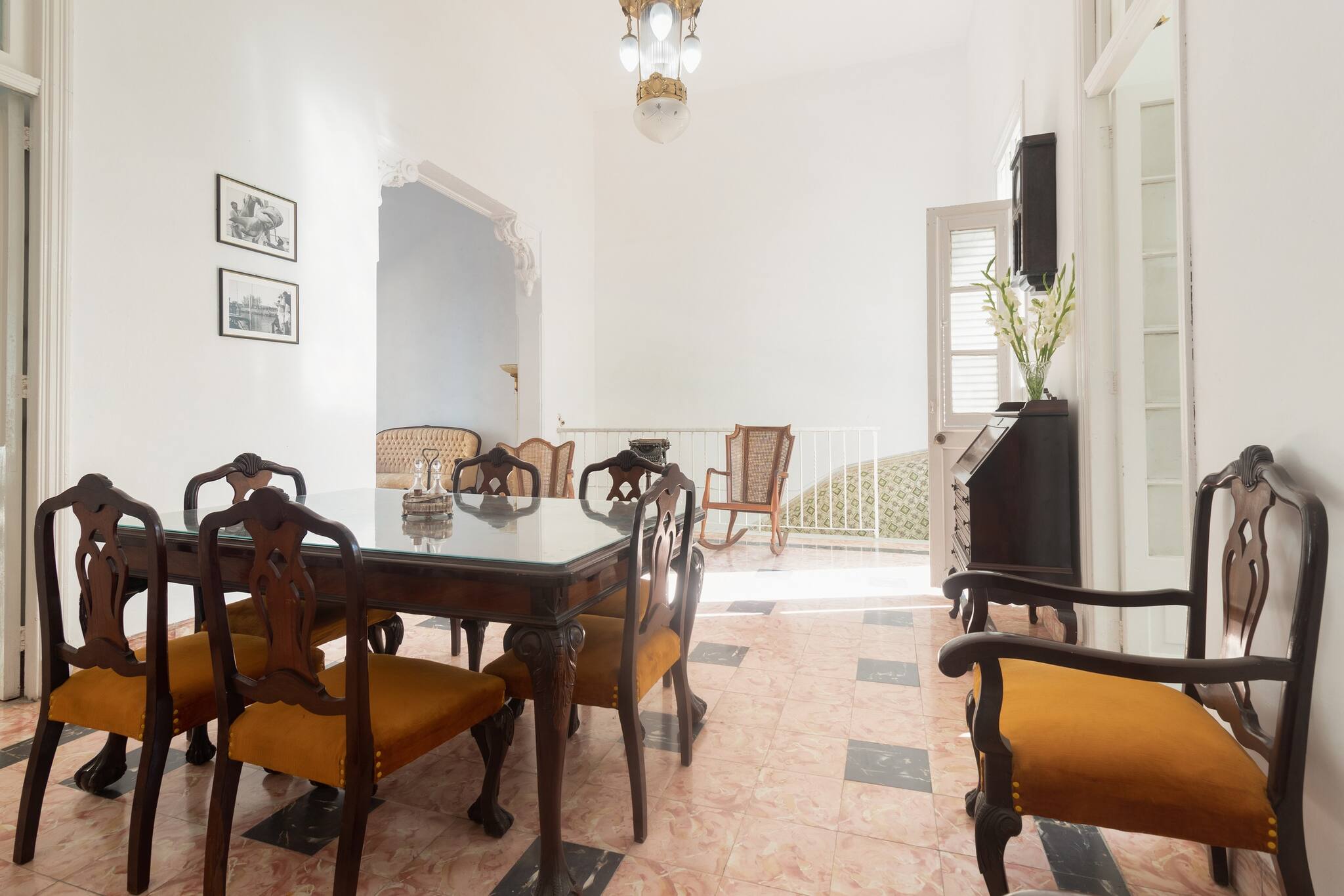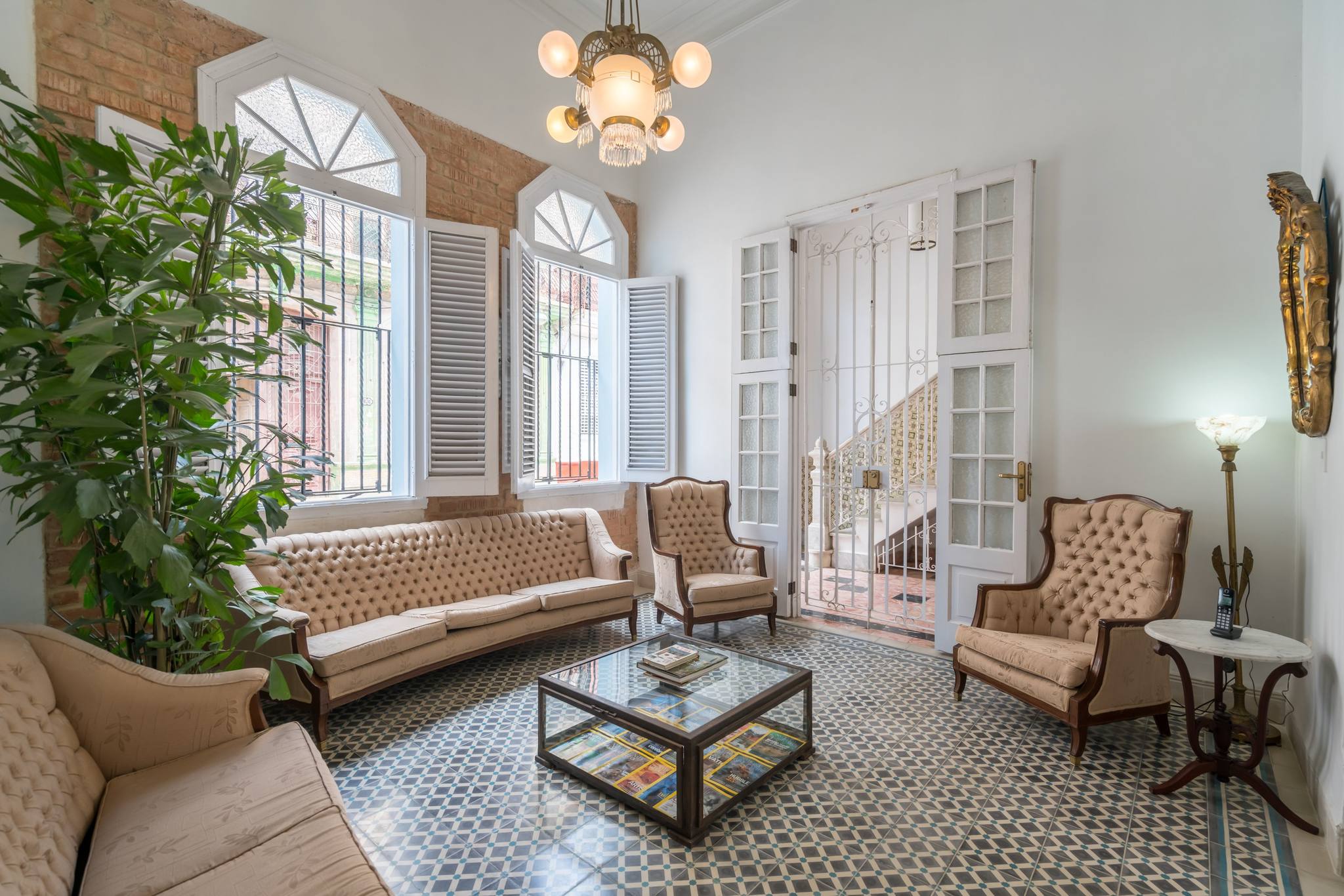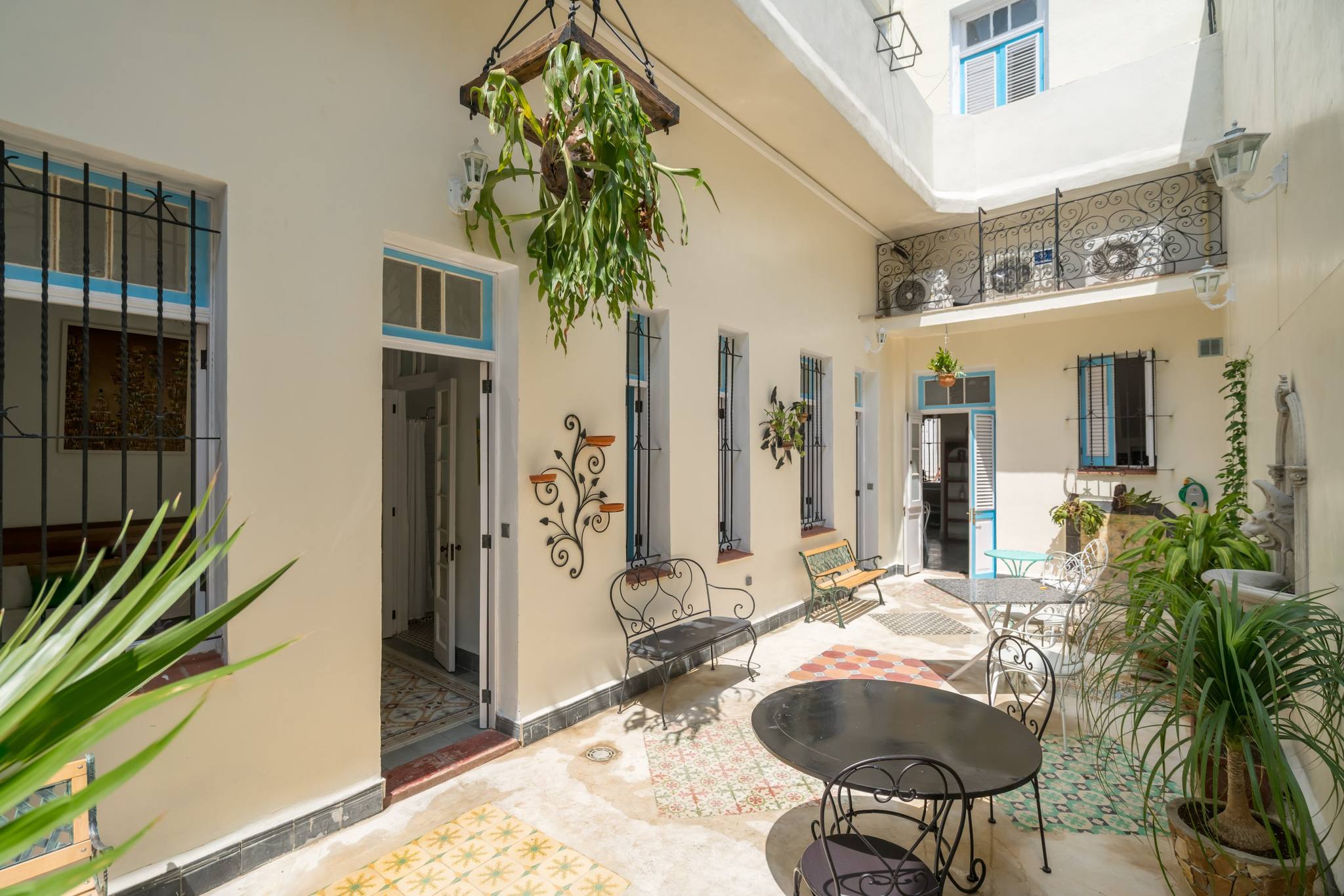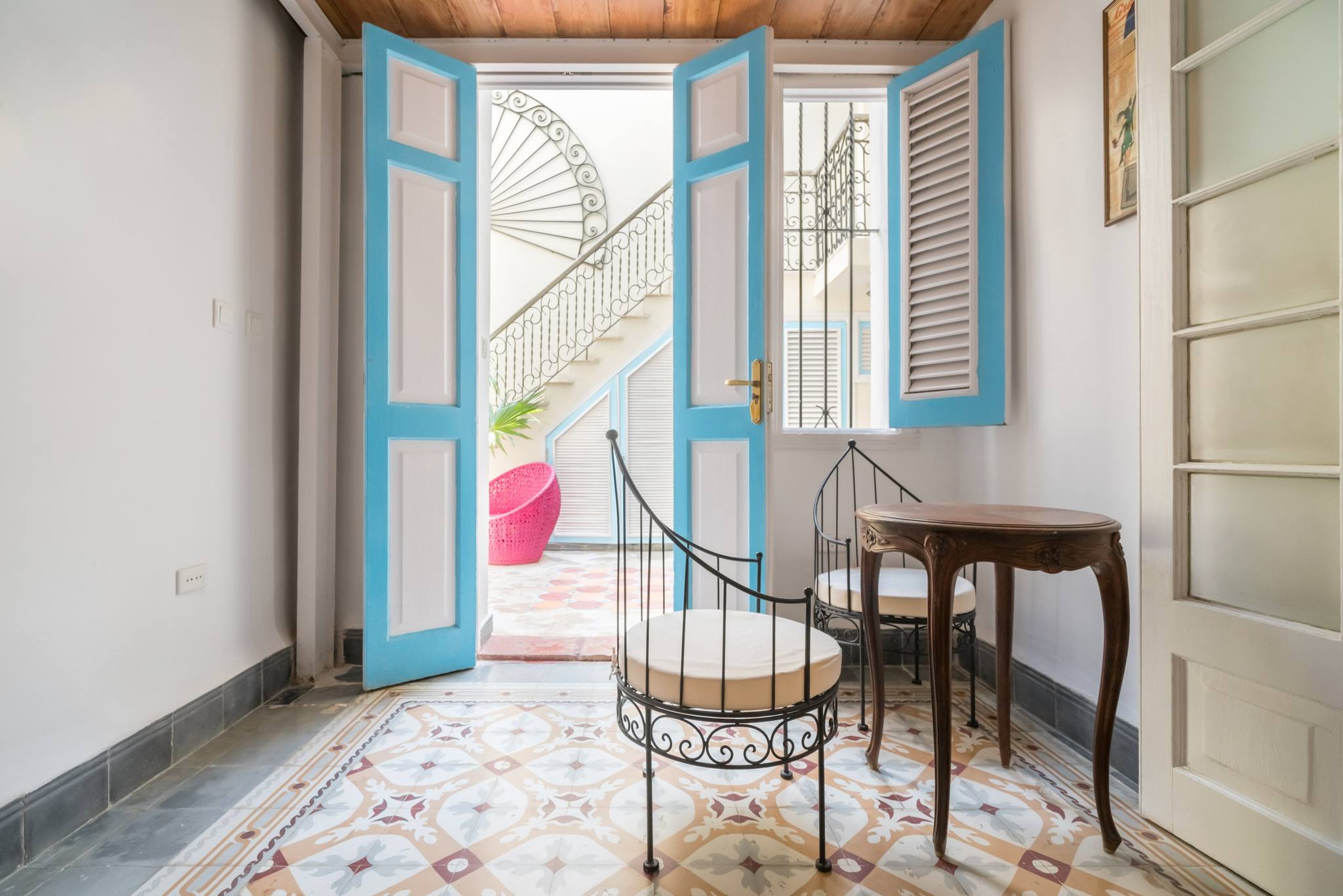Since 1929
It is an Art Deco house built in 1929 of high struts, with ceilings of 4.80 meters high, with a beautiful entrance with original relief mosaics and a marble staircase that leads to the upper floor.
The house was acquired from its original owners and after a capital repair to adjust it to the current activity.
To this end, its original structure was respected in the common areas and changes were made to the rooms.
The hostel currently has a room decorated with marble tables, bronze lamps and period details that leads to a living room-kitchen with a bar where breakfasts are served as well as cocktails, coffee, and light food services on request.
9Rooms
2Terrace
Our Location
1. Havana Center
Halfway between the neighborhoods of Old Havana and Vedado, bordering the well-known Havanan seafront, is the municipality of Centro Habana, the most populated of Cuba and an indissoluble and living part of the city.
2. Central Park and Capitol
In this area are emblematic places of the city such as the central park, the National Capitol, the headquarters of the national ballet of Cuba, the majestic Paseo Del Prado with its marble benches and bronze lions, silent witnesses of a splendid past.
3. Places of Interest
In the area we can find museums such as the Museum of Modern Art, Museum of the Revolution, located in the former Presidential Palace, Chinatown, the Floridita Bar, hotels such as Central Park, England, Plaza, restaurants and bars (Floridita, San Cristóbal, La Guarida (famous location of the film Strawberry and Chocolate) and recommended visit to admire the beauty of the restored palace and taste of its good cuisine.
4. Architecture
For more than 150 years Centro Habana has been the protagonist of the history of a bustling and pulsating city where over the years it has left its mark on its buildings that in the midst of the scars of time survive as they can between bright colors and islands of houses that with effort they recover their original beauty. Strolling through its streets is an exercise to admire among some ruins of ruined houses the architecture of the area where you can find Art Deco jewels such as the Bacardi building, as well as baroque, colonial, modernist and eclectic houses, without forgetting the architectural inventions that the need and the passing of the years have imposed on habaneros.
Gallery
